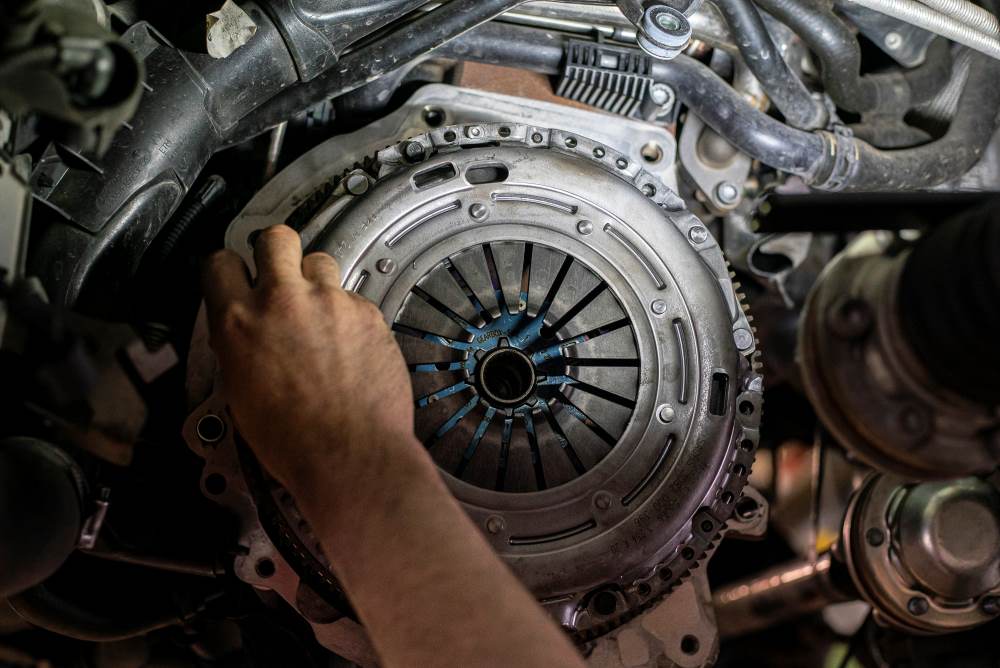
What is the Difference Between Wet Clutch and Dry Clutch and What are Its Advantages?

While multiple parts and components contribute to the functioning of vehicles, the clutch is probably one of the most essential ones. It is a mechanical linkage between the engine and transmission, helping wheels to disengage before the vehicle stops moving.
If you are a vehicle owner, it is important to ensure the proper functioning of the clutch for a smooth driving experience.
Keep reading this article to get a complete overview of wet clutch vs dry clutch.
What is a Wet Clutch?
As the name suggests, a wet clutch is moist, covered with liquids. The liquid is, however, not water but engine oil. This oil plays a part in cooling the clutch plates when they heat up.
Here, it is essential to keep in mind that a wet clutch requires your attention to changing the oil filter at the right intervals. As the clutch is covered by oil, it is likely to attract more dirt, which can be challenging for the oil filter to remove for a long time.
What is a Dry Clutch?
The purpose of dry clutches remains the same as wet clutches, providing a connection between the engine and transmission within your vehicle. However, as the name suggests, such clutches are not lubricated with engine oil. They are not moist but dry and free of the oil lubricant.
This means that your vehicle's clutch will be dry and less exposed to dirt with dry clutches. However, it also means that the clutch plates will not be cooled down easily, as lubricant is lacking.
What are the Differences Between Dry and Wet Clutches?
The following table includes the differences between dry and wet clutches. It will provide a better overview of these two.
|
Criteria |
Wet Clutches |
Dry Clutches |
|
Oil lubricant |
Such clutches come with engine oil, which acts as a lubricant spread all over it. |
These clutches are free of engine oil and do not contain any lubrication. |
|
Type of plate |
You can find vehicles with a wet multi-plate clutch, as the clutch has oil to cool down all the plates. |
There is no oil supply between the plates; hence, such clutches are usually single-plate. |
|
Torque transmission type |
Such clutches are ideal for high-torque situations undergoing high friction levels. |
They are ideal for lower torque situations, whereby the friction level is relatively low. |
|
Noise |
The level of noise between the plates is relatively lower. This is mainly because the oil between the plates helps avoid vibration. |
The noise levels are relatively higher compared to wet clutches, which can increase with wear and tear. |
|
Wear and tear |
Such clutches ensure lower wear and tear, as the lubricant protects the clutch from being exposed. |
With such clutches, there are higher chances of wear and tear, as there is no protection available. |
|
Dust accumulation |
There is a higher possibility of dust accumulation with such clutches, as these are covered with oil. However, the oil filter controls the dust. |
There is a lower possibility of accumulation of dust particles here, as the clutch is dry. However, there is no oil filter here. |
|
Life cycle |
Such clutches offer a higher life cycle, lower wear and tear risks, and great protection. |
The life cycle of such clutches can be lower, as these are more vulnerable to wear and tear with time. |
|
Maintenance |
There is a lower requirement for regular maintenance in such clutches. |
You need to regularly maintain such clutches, which can be expensive. |
|
Coefficient of friction |
With the presence of multiple plates, the surface area is increased in such clutches. Thus, they offer a better coefficient of friction. |
Such clutches come with a single frictional surface, which is used for transmitting power between two plates. The coefficient of friction is, therefore, low. |
What are the Advantages of Wet Clutches?
Knowing the advantages of wet clutches will help you learn more about them. Some of these are listed below:
The engine oil covering the clutch allows it to cool down, thereby preventing its temperature from rising to an excessive level.
As the clutch plates cool easily, wet clutches are capable of surviving more abuse than that dry clutches.
There is less wear and tear in such clutches, as the lubricant is covering it.
The oil filter removes the accumulated dust from the clutch.
Such clutches offer an impressive life cycle, which makes them more sustainable.
Wet clutches allow more beating, which means they can achieve high torque scenarios.
Such clutches also maintain much lower noise when operating.
What are the Advantages of Dry Clutches?
Here are some advantages to help you understand the concept better:
Dry clutches are less likely to accumulate dirt as they are not covered in oil.
The transmission efficiency of such clutches is naturally higher due to the lack of lubricant.
There is direct contact between the clutch plate and the driving shaft, which causes lower power loss.
Such clutches are usually ideal for low-torque scenarios.
The pressure on the engine is relatively lower in such clutches.
That was all about wet clutch and dry clutch. It is up to you to choose the kind of clutch that will be beneficial for you. In most cases, people with the requirement for daily vehicular activities choose wet clutches. On the other hand, people who need more speed in their vehicles go for dry clutches.













